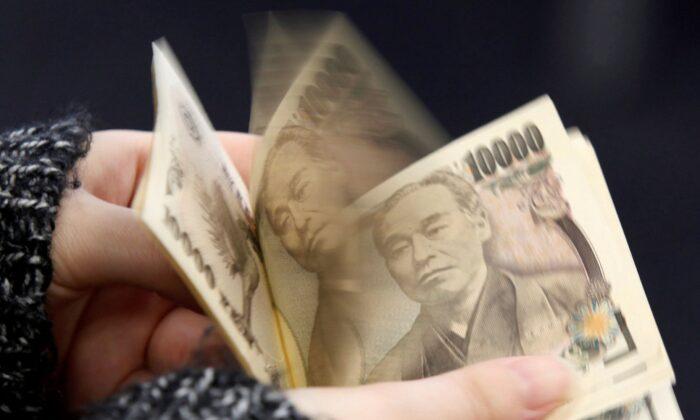LONDON—The Japanese yen briefly fell to a fresh two-decade low on Wednesday after the Bank of Japan stepped into the market again to defend its ultra-low interest-rate policy, drawing a sharp contrast with the United States where bond yields hit new highs.
But the Japanese unit bounced in London trading as increased nervousness around verbal intervention and growing speculation around an impending bilateral meeting between U.S. Treasury Secretary Yellen and her Japanese counterpart prompted traders to trim some short bets.
Still, positioning in the derivatives and currency futures suggest the yen weakness has more room to run.
The BOJ again offered to buy unlimited amounts of Japanese government bonds to check the rise in Japanese 10-year yields, which were butting against its 0.25 percent tolerance ceiling.
In contrast, Treasury yields marched to three-year highs while inflation-adjusted bond yields hit positive territory for the first time since March 2020 as hawkish comments by policymakers reinforced expectations of aggressive U.S. interest rate hikes.
The U.S. dollar reached 129.43 yen for the first time since April 2002 in Asian trading before easing to last trade 0.9 percent lower at 127.82.
“The 130 is a psychological level; if we break it (likely) then momentum will likely drive USDJPY even higher,” said Vasileios Gkionakis, EMEA head of FX G10 Strategy at Citibank.
“This is a play on monetary policy divergence with the Fed in tightening mode and the BoJ still easing.”
The dollar’s rally against the yen has come as U.S. Treasury yields pushed higher, with 10-year yields touching 2.981 percent for the first time since December 2018 in Tokyo trading. Inflation-adjusted U.S. 10-year yields hit 0 percent overnight.
“The yen remains the loser of the monetary policy normalisation,” Commerzbank strategists said.
Elsewhere, the euro was the other big gainer in London. The single currency was up as much as 0.6 percent at $1.0853.
The dollar index, which measures the currency against six major peers including the yen, early in the day matched Tuesday’s high at 101.03 - a level not seen since March 2020—before easing to 100.38, down 0.6 percent in the day.
An index of currency market volatility firmed above 8 percent but still well below 2022 highs of 10 percent hit in March.
The offshore Chinese currency was the other big loser with the unit declining 0.4 percent to 6.44 yuan per dollar.





